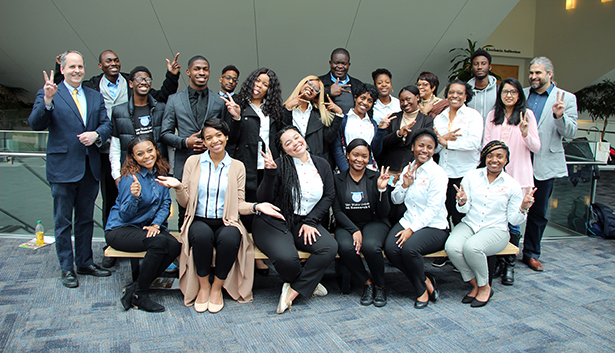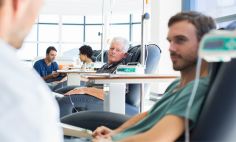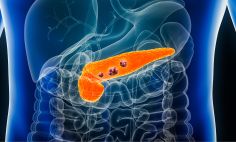Jon R. Lorsch, PhD, has been the director of the National Institute of General Medical Sciences (NIGMS) since August 2013. In his position, Dr. Lorsch oversees a $3 billion budget that supports more than 5,500 investigators through roughly 5,000 research grants. One in 10 research grants from NIH comes from NIGMS, so Dr. Lorsch’s work is crucial to NIH’s goal of advancing research across the country.
Dr. Lorsch chatted with us about his work with NIGMS, his reasons for pursuing science, and his passion for helping up-and-coming researchers.
How would you describe the mission and focus of NIGMS?
We have a few areas of focus. We perform basic scientific research, looking at how life processes work. That includes research on things as small as molecules and cells and as large as whole organisms and entire populations and ecosystems. We fund research in specific clinical areas that involve multiple organ systems—things like sepsis, anesthesiology, burns, and trauma. We also have a major focus on training new scientists, developing a diverse workforce, and increasing research capacity throughout the country. We’re trying to invest in places that historically haven’t had much funding to conduct research and support researcher training and career development to create a more diverse and inclusive science workforce.
What is NIGMS doing to help foster that diversity?
Our programs span the entire pathway of science career development, starting with early childhood education and going all the way to helping early career scientists establish independent research.
Tell us about the scientific research you fund: What is basic science research, and why is it so important?
We lay the foundation for all the other research that NIH supports. It’s crucial to understand the basics of how different organisms work because if you know that, then you understand how breakdowns in those processes cause diseases. That gives you the needed information to eventually develop treatments. It’s like when there’s something wrong with your car. If you don’t understand the basics of how the car should work, then it’s going to be really hard to figure out what’s wrong with it and how to fix it.
We support research that investigates how basic life processes—which covers a wide range of approaches and topics—work at different levels. That research could look like anything from scientists working with test tubes and solutions to researchers using computers to simulate biological processes. We think it’s really important to support investigator-initiated research, meaning we don’t tell researchers what they should be working on. We don’t know where discoveries will arise, and big breakthroughs often come from surprising places, so we need to invest in a broad range of research.
What are some things NIGMS does to support early career scientists?
We have programs supporting research training, career development, and increased diversity at the undergraduate, graduate, and post-doctorate levels. One of our new programs called MOSAIC (which stands for Maximizing Opportunities for Scientific and Academic Independent Careers) helps post-doctorate research fellows establish faculty careers at research institutions. We really invest in networking and mentorship—a good network and mentors can “make or break” someone’s interest and success in science.
And what about for kids, how do you get them interested in STEM?
Our SEPA (Science Education Partnership Award) Program, which funds new, innovative education projects in scientific areas that young people might be interested in, has programs in almost every state. Some help support after-school science clubs that focus on students from underserved communities. We have a program that makes science-focused apps for online games. A program in West Virginia supports students who are pursuing biomedical research activities in high school, and graduates of the program get college tuition from the state at colleges and universities in West Virginia. A superhero-themed program in Indiana gets kids interested in veterinary research, and a program in Utah helps train teachers to give them the skills to make genetics engaging for kids.
What are some NIGMS-funded reseach projects that you’re really excited about?
There are so many things! We’re supporting research that uses data science, artificial intelligence, and machine learning to better understand biological systems. We’re investing in research related to synthetic chemistry―basically, making molecules. This is super important for drug development, and one of our researchers recently won the Nobel Prize in chemistry for their work in “molecular carpentry.” They essentially created a better way to stick different molecules together to make new ones.
We’re also funding research on organisms that might give us new insights into biological processes in surprising ways. For example, the African spiny mouse is the only mammal that can heal its wounds without scarring. By studying that, we’re hoping to learn more about why humans form scars and whether we could make a molecule that could let us heal without scarring. This could be huge for heart disease since heart attacks cause scarring on the heart, which makes it weaker than before the attack.
What led you to a career in science?
I actually remember the exact moment I knew I wanted to be a scientist. I was four years old, and a teacher brought a cow heart into the classroom. Most of the other kids were freaked out, but I thought it was the coolest thing. I was looking at all the channels and flaps and thinking, “How did this work? Where did it come from?” It made me want to be a scientist.
I also had really great science teachers throughout my education who helped me get and stay interested in science.

How did you get to your current position?
After completing a post-doctoral fellowship, I joined the faculty at the Johns Hopkins School of Medicine, where I was really thrown into the deep end of teaching. I had this pressure to focus on research, but I found I really enjoyed teaching the medical students and got more involved in that. I wanted to find the best ways to teach them and ended up leading the first-year curriculum for medical students and working on some curriculum reform efforts.
My experience there made me realize I wanted to move towards scientific leadership and management―spaces where I felt like I could have a bigger impact. The NIGMS director opportunity came along, and I decided to apply in the spirit of “opportunity knocks only once.” It’s the greatest job in the world.
What’s the best thing about working in science?
The young people. It’s amazing to have the opportunity to help people’s careers get started and sustain them throughout those careers. Funding an early career investigator to get their lab up and running, then watching what they do over the next few years and thinking, “Maybe they’ll be the one to win the Nobel Prize”—that’s what motivates me.
What do you like to do when you’re not working?
I really enjoy gardening, and the pandemic helped reinvigorate that hobby. Planting a seed, watching it grow, and getting to manage all that is just astonishing. It’s a lot like promoting careers in science!







